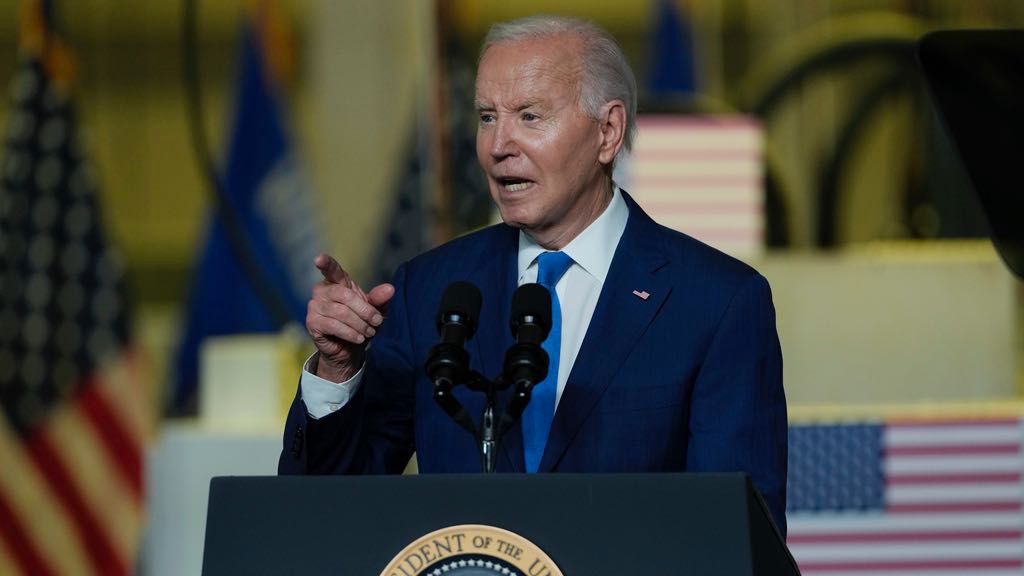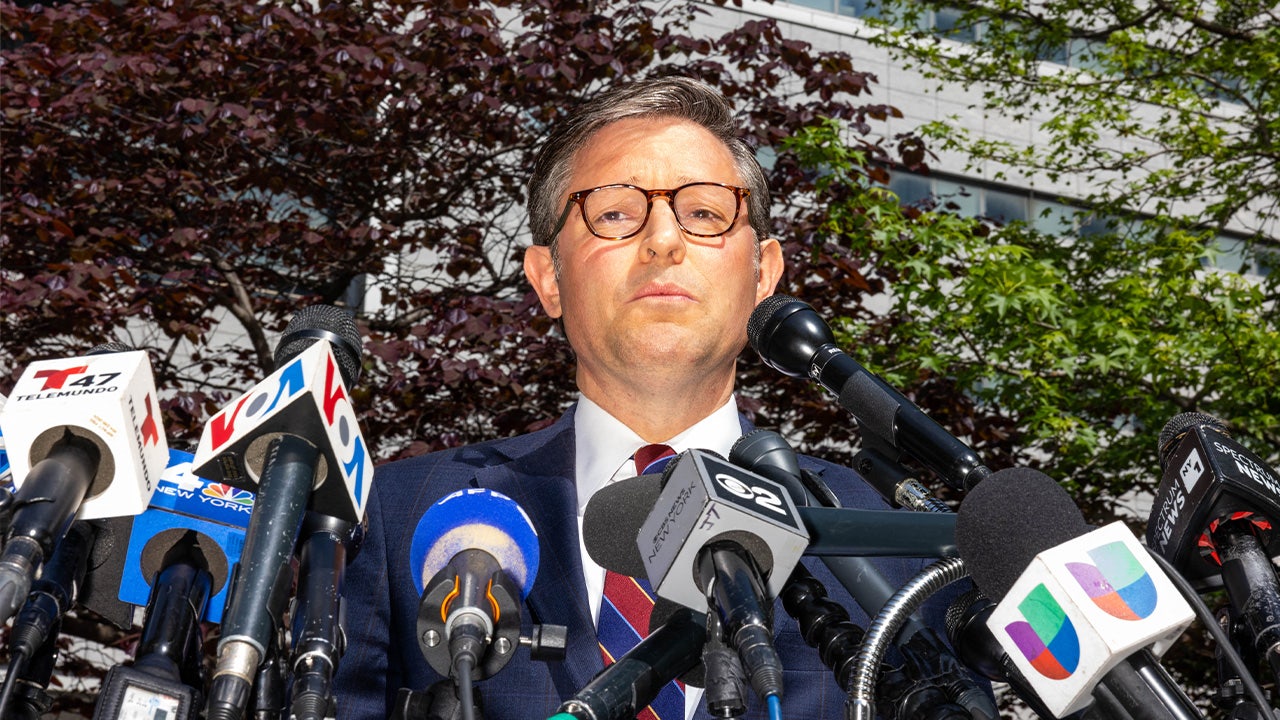World
Russia and Ukraine pummel each other’s defence industry amid land stalemate
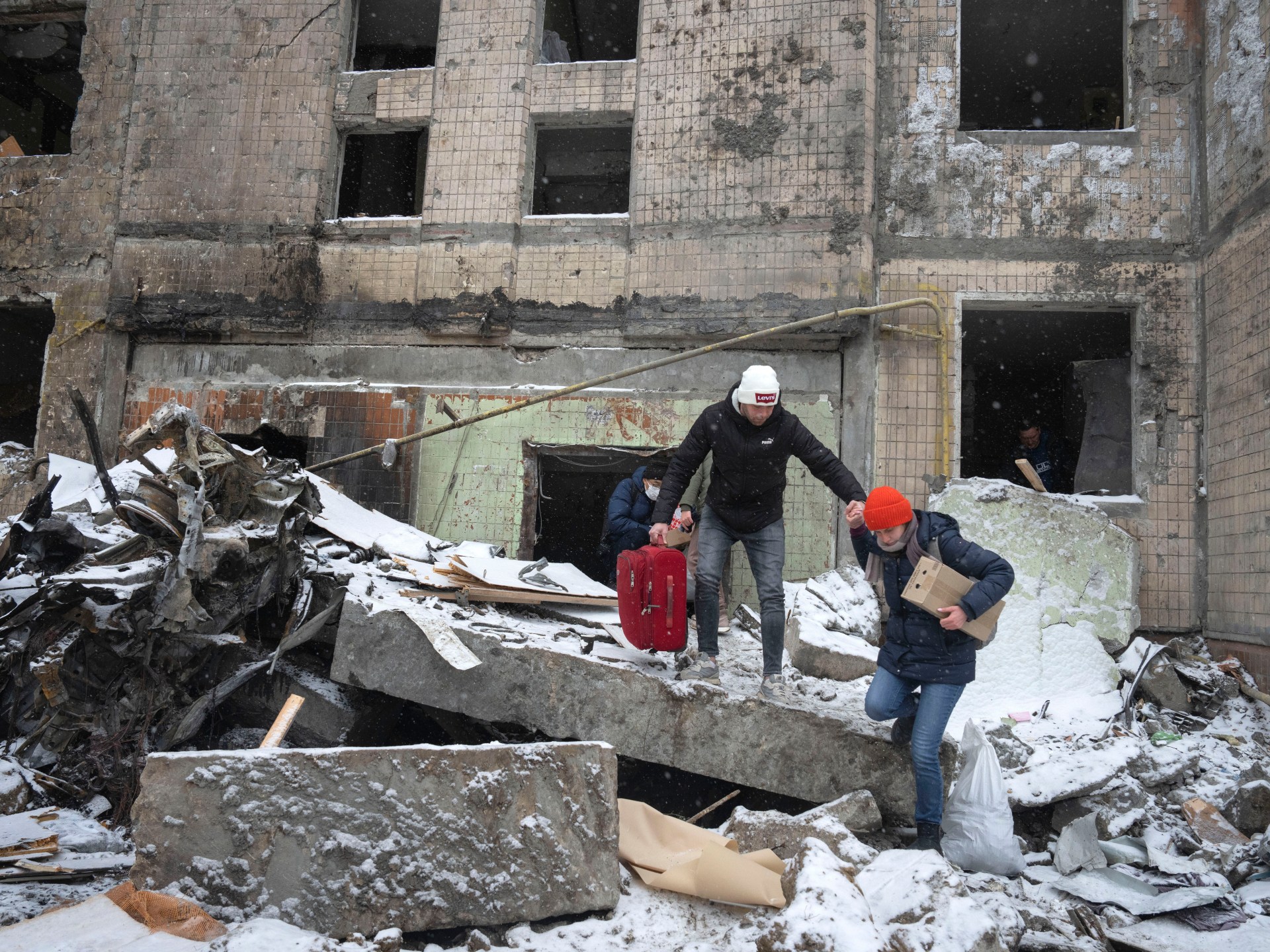
Russia launched a relentless barrage of missiles and drones into Ukraine during the last few days of 2023 and into the new year, revealing weaknesses in Ukrainian air defences that allowed dozens of people to be killed and hundreds wounded.
Russia’s Ministry of Defence said it was targeting military industry and infrastructure, something Ukrainian commander-in-chief Valery Zaluzhny confirmed; but many of the missiles landed on apartment buildings, shopping centres and a maternity hospital in city centres.
Even as Ukraine’s allies called for reinforcements in air defence, Ukraine responded punitively, launching drones into the Russian city of Belgorod that killed at least 26 people.
Overall, Russia was able to deliver greater volumes than Ukraine and attack more often, demonstrating the industrial might it has quietly nurtured under a barrage of Western sanctions.
Frustrating war on the ground
This aerial war played out against a static front line, where Russia now seems to have taken the initiative in assaulting Ukrainian positions – a reversal of the situation during last summer’s Ukrainian counteroffensive.
The slight changes on the military map were in Russia’s favour. Russian forces advanced north and south of Bakhmut, overrunning Bohdanivka and parts of Klishchiivka, villages Ukrainian troops won during weeks of bloody battles last summer, and from which they hoped to surround the occupied city.
But despite repeated assaults, Russian forces were unable to dislodge a Ukrainian bridgehead from the village of Krynky on the east bank of the Dnipro in Kherson.
Here, Ukrainian special forces have stolen a march on the Russians in recent weeks, occupying islands in the Dnipro delta along with a chunk of the riverbank, from where they have conducted counter-battery fire. Russian forces have lost 143 units of military equipment trying to pierce Ukrainian defences. Russian commanders have become so frustrated that they have reportedly ordered their troops to walk across Ukrainian minefields – a suicidal tactic known as the “Zhukov manoeuvre”.
Battle of missile factories
Even as these desperate battles played out on the flatlands of Europe’s most fertile country, Russia opened a new chapter in the air war on December 29.
Under cover of darkness, it unleashed a combination of at least 156 drones and missiles against Kyiv, Odesa, Lviv and Kharkiv. Ukraine’s armed forces said it was the largest single aerial attack on Kyiv. Military analysts said it was the largest series of missile and drone strikes against Ukraine in almost two years of full-scale war.
The Ukrainian Air Force shot down 114 of the missiles and drones, but could not prevent Russia from killing 39 people and injuring 159.
Twenty-four hours earlier, The New York Times had published an op-ed by a member of its editorial board, calling for Ukraine to negotiate. “Regaining territory is the wrong way to imagine the best outcome,” wrote Serge Schmemann.
Ukrainian Foreign Minister Dmytro Kuleba responded on X: “Today, millions of Ukrainians woke up to the loud sounds of explosions. I would like the whole world to hear these sounds of explosions … in all editorial offices that write about ‘fatigue’ or that Russia is allegedly ready for ‘negotiations’.”
US President Joe Biden, urging Congress anew to pass $61bn in military funding for Ukraine, said, “It is a stark reminder to the world that, after nearly two years of this devastating war, [Russian President Vladimir] Putin’s objective remains unchanged. He seeks to obliterate Ukraine and subjugate its people. He must be stopped.”
The attack appeared “to be a culmination of several months of Russian experimentation with various drone and missile combinations and efforts to test Ukrainian air defenses”, wrote the Institute for the Study of War (ISW), a Washington, DC-based think tank.
Until December 29, Russia had mainly or exclusively used drones, the ISW said, sacrificing these relatively cheap tools to probe aerial defences and figure out optimal flight paths. On this occasion, Russia used just 36 Shahed-type drones and 120 missiles of various types.
The experiment was a success, the ISW said, as Ukrainian forces failed to intercept a wide array of missiles.
The experiment was also the culmination of months of preparation in ramping up missile production. Ukraine’s military intelligence had estimated in November that Russia was able to produce about 100 missiles a month despite sanctions. This meant that Russia spent about a month’s worth of production capacity in a single night, making that scale of barrage unsustainable. It was also economically unsustainable. Ekonomichna Pravda, a Ukrainian business newspaper, estimated the cost to Russia of the drones and missiles at $1.27bn, using Forbes data. Russia’s entire 2024 defence and security budget is $157bn.
Revenge and counter-revenge
The next day, Ukraine said it launched more than 70 drones against Russian military infrastructure and defence industrial facilities near Moscow, Belgorod, Tula, Tver, and Bryansk cities. Russia’s Defence Ministry said it downed 32 drones, suggesting that many made it through.
Twenty-five people were reported killed in Belgorod. Geolocated footage showed smoke over Bryansk city the next day, suggesting Ukraine may have succeeded in hitting the Kremniy EL factory, Russia’s second-largest producer of microelectronics, most of whose output reportedly goes to the military.
Russia responded. On December 31, Ukraine said it shot down 21 out of 49 drones launched by Russia – an unusually small number, possibly because many were directed at Ukrainian front lines rather than civilian areas, Russia’s usual tactic. It also launched six S-300 missiles into central Kharkiv, injuring 28 people, and again attacked at 1am with drones, causing further damage to shops and cafes but not more casualties.
On January 1, Ukraine’s air force said it shot down 87 out of 90 Shahed drones launched from Crimea and Russia, targeting Odesa, Lviv and Dnipro. Later in the day, six Russian missiles hit Kharkiv, Ukraine’s second-largest city, injuring 28 people.
Many of Ukraine’s allies called for more air defence systems to be provided, but only the United Kingdom pledged any, saying it was sending Ukraine 200 air-launched air defence missiles. “Putin is testing Ukraine’s defences and the West’s resolve, hoping that he can clutch victory from the jaws of defeat. But he is wrong,” British Defence Secretary Grant Shapps said.
Ukraine said it destroyed nine out of 10 Shahed drones launched by Russia overnight on January 1.
Another wave of drones and missiles came overnight on January 2, including 35 Shahed drones and 99 missiles of various types. Ukraine said it shot down all the drones and 72 of the missiles. In an important victory, it managed to shoot down all 10 Kh-47 Kinzhal hypersonic missiles using US-made Patriot air defence systems.
Ukraine responded with another air attack on Belgorod – launching at least 17 missiles and drones, killing one person – on January 2, and launched a dozen missiles and several drones into Belgorod the following day.
If nothing else, the pattern of Russian attacks confirmed Ukraine’s oft-stated position that if left in Russian hands, Crimea would remain a security threat to its southern regions. Many of the drones and missiles that hit Ukraine were launched from the occupied Crimea Peninsula.
“The costs and challenges of Ukraine’s defense vary dramatically if Crimea returns to Ukraine or remains in Russia’s hands,” wrote the ISW in a strategy paper. “If Ukraine liberates the peninsula along with Russian-occupied lines in the south … then the imminent threat to Kherson, Mykolaiv, and Odesa vanishes and the threat to Melitopol is dramatically reduced,” it said.

World
The Boys Gets Early Season 5 Renewal

ad
World
Argentina reports its first single-digit inflation in 6 months as markets swoon and costs hit home
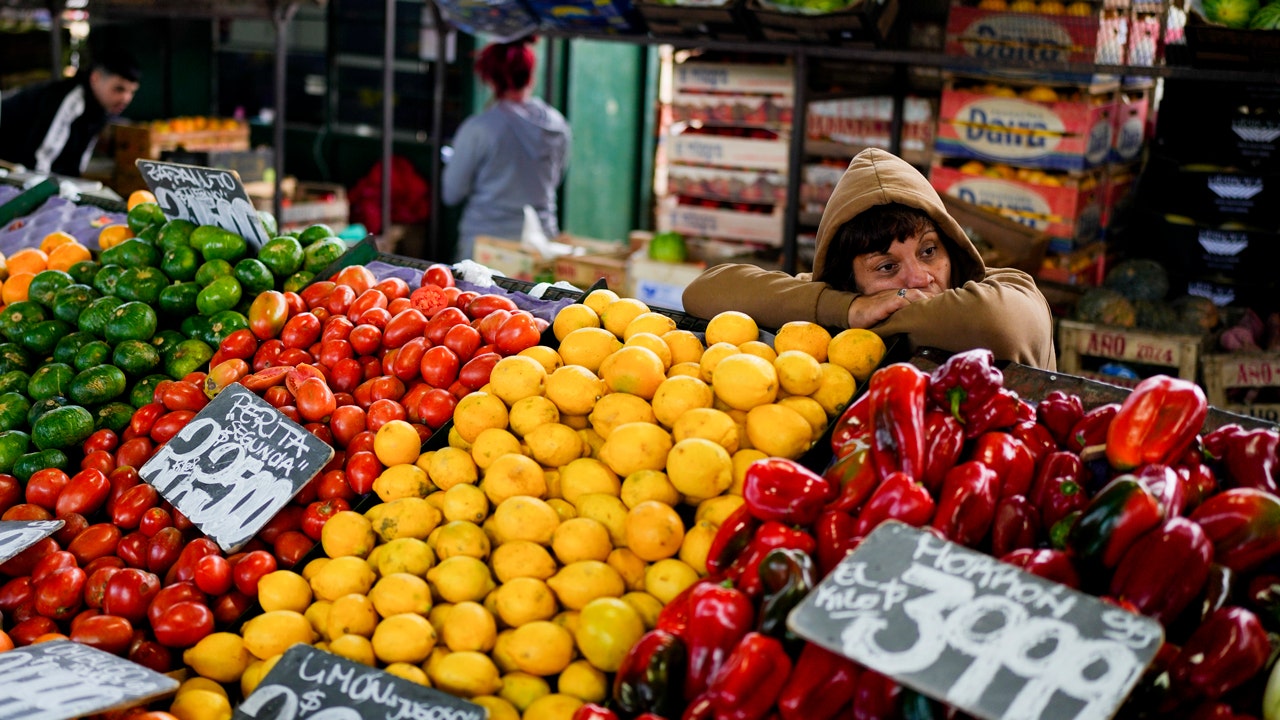
Argentina’s monthly inflation rate eased sharply to a single-digit rate in April for the first time in half a year, data released Tuesday showed, a closely watched indicator that bolsters President Javier Milei’s severe austerity program aimed at fixing the country’s troubled economy.
Prices rose at a rate of 8.8% last month, the Argentine government statistics agency reported, down from a monthly rate of 11% in March and well below a peak of 25% last December, when Milei became president with a mission to combat Argentina’s dizzying inflation, among the highest in the world.
ARGENTINA WILL GET NEXT INSTALLMENT OF BAILOUT AS IMF PRAISES MILEI’S AUSTERITY POLICIES
“Inflation is being pulverized,” Manuel Adorni, the presidential spokesperson, posted on social media platform X after the announcement. “Its death certificate is being signed.”
Although praised by the International Monetary Fund and cheered by market watchers, Milei’s cost-cutting and deregulation campaign has, at least in the short term, squeezed families whose money has plummeted in value while the cost of nearly everything has skyrocketed. Annual inflation, the statistics agency reported Tuesday, climbed slightly to 289.4%.
“People are in pain,” said 23-year-old Augustin Perez, a supermarket worker in the suburbs of Buenos Aires who said his rent had soared by 90% since Milei deregulated the real estate market and his electricity bill had nearly tripled since the government slashed subsidies. “They say things are getting better, but how? I don’t understand.”
A vendor waits for customers at the central market for fruit and vegetables in Buenos Aires, Argentina, Friday, May 10, 2024. (AP Photo/Natacha Pisarenko)
Milei’s social media feed in recent weeks has become a stream of good economic news: Argentine bonds posting some of the best gains among emerging markets, officials celebrating its first quarterly surplus since 2008 and the IMF announcing Monday it would release another $800 million loan — a symbolic vote of confidence in Milei’s overhaul.
“The important thing is to score goals now,” Milei said at an event Tuesday honoring former President Carlos Menem, a divisive figure whose success driving hyperinflation down to single digits through free-market policies Milei repeatedly references. “We are beating inflation.”
Even so, some experts warn that falling inflation isn’t necessarily an economic victory — rather the symptom of a painful recession. The IMF expects Argentina’s gross domestic product to shrink by 2.8% this year.
“You’ve had a massive collapse in private spending, which explains why consumption has dropped dramatically and why inflation is also falling,” said Monica de Bolle, a senior fellow at the Peterson Institute for International Economics who studies emerging markets. “People are worse off than they were before. That leads them to spend less.”
Signs of an economic slowdown are everywhere in Buenos Aires — the lines snaking outside discounted groceries, the empty seats in the city’s typically booming restaurants, the growing strikes and protests.
At an open-air market in the capital’s Liniers neighborhood, Lidia Pacheco makes a beeline for the garbage dump. Several times a week, the 45-year-old mother of four rummages through the pungent pile to salvage the tomatoes with the least mold.
“This place saves me,” Pacheco said. Sky-high prices have forced her to stick to worn-out clothes and shoes and change her diet to the point of giving up yerba mate, Argentina’s ubiquitous national drink brewed from bitter leaves. “Whatever I earn from selling clothes goes to eating,” she said.
Argentina’s retail sales in the first quarter of 2024 fell nearly 20% compared to the year before, a clip comparable to that of the 2020 pandemic lockdowns. The consumption of beef — an Argentine classic — dropped to its lowest level in three decades this quarter, the government reported, prompting panicked editorials about a crisis in Argentina’s national psyche.
“Now I buy pork and chicken instead,” said Leonardo Buono, 51-year-old hospital worker. “It’s an intense shock, this economic adjustment.”
Milei, a self-proclaimed “anarcho-capitalist” and former TV personality, warned his policies would hurt at first.
He campaigned brandishing a chainsaw to symbolize all the cutting he would do to Argentina’s bloated state, a dramatic change from successive left-leaning Peronist governments that ran vast budget deficits financed by printing money.
Promising the pain would pay off, he slashed spending on everything from construction and cultural centers to education and energy subsidies, from soup kitchens and social programs to pensions and public companies. He has also devalued the Argentine peso by 54%, helping close the chasm between the peso’s official and black-market exchange rates but also fueling inflation.
Inflation in the first four months of 2024 surged by 65%, the government statistics agency reported Tuesday. Prices in shops and restaurants have reached levels similar to those in the U.S. and Europe.
But Argentine wages have remained stagnant or declined, with the monthly minimum wage for regulated workers just $264 as of this month, with workers in the informal economy often paid less.
Today that sum can buy scarcely more than a few nice meals at Don Julio, a famous Buenos Aires steakhouse. Nearly 60% of the country’s 46 million people now live in poverty, a 20-year high, according to a study in January by Argentina’s Catholic University.
Even as discontent appears to rise, the president’s approval ratings have remained high, around 50%, according to a survey this month by Argentine consulting firm Circuitos — possibly a result of Milei’s success blaming his predecessors for the crisis.
“It’s not his fault, it’s the Peronists who ruined the country, and Milei is trying to do his best,” said Rainer Silva, a Venezuelan taxi driver who fled his own country’s economic collapse for Argentina five years ago. “He’s like Trump, everyone’s against him.”
Argentina’s powerful trade unions and leftist political parties have pushed back against Milei with weekly street protests, but haven’t managed to galvanize a broad swath of society.
That could change — last week, a massive protest against budget cuts to public universities visibly hit a nerve, drawing hundreds of thousands of people.
“The current situation is completely unsustainable,” said de Bolle, the economy expert.
World
Co-leader of Germany's far-right AfD party fined for using Nazi slogan
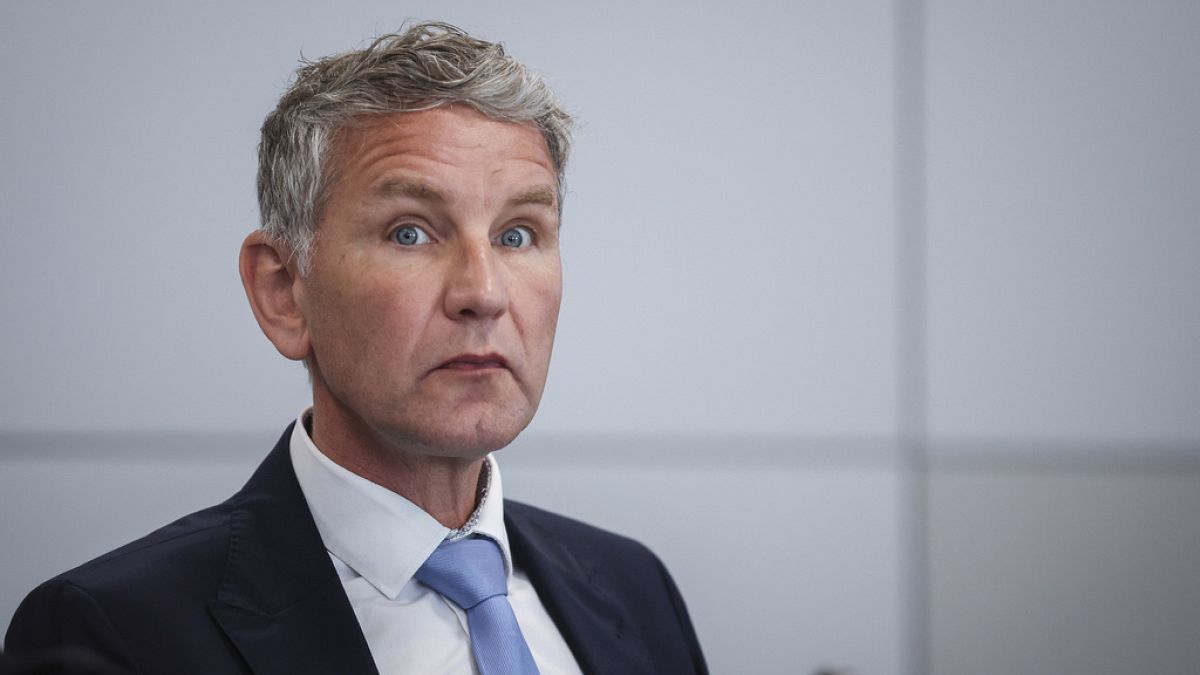
The case involved Björn Höcke’s use of “Everything for Germany!” in a 2021 speech. While prosecutors said he knew it was originally a Nazi slogan, Höcke claimed it was an “everyday saying”.
Björn Höcke, who is one of the best-known figures in the far-right Alternative for Germany party, has been fined for using a Nazi slogan in a speech.
The verdict on Tuesday in his trial comes months before a regional election in the eastern state of Thuringia in which he plans to run for the governor’s job.
The state court in the eastern city of Halle convicted Höcke of using symbols of an unconstitutional organisation, German news agency dpa reported. It imposed a fine of 13,000 euros.
The charge can carry a maximum sentence of three years in prison. Prosecutors had sought a six-month suspended sentence, whilst his defence lawyers argued for acquittal.
The case centred on a speech in Merseburg in May 2021 in which Höcke used the phrase “Everything for Germany!” Prosecutors contended he was aware of its origin as a slogan of the Nazis’ SA stormtroopers, but Höcke has argued that it is an “everyday saying.”
He testified at the trial that he is “completely innocent.” The former history teacher described himself as a “law-abiding citizen.”
The 52-year-old Höcke is an influential figure on the hard right of the AfD. He has led its regional branch in Thuringia since 2013, the year the party was founded, and is due to lead its campaign in a state election set for September 1.
He once called the Holocaust memorial in Berlin a “monument of shame” and called for Germany to perform a “180-degree turn” in how it remembers its past. A party tribunal in 2018 rejected a bid to have him expelled.
Prosecutor Benedikt Bernzen argued in Tuesday’s closing arguments that Höcke had used Nazi vocabulary “strategically and systematically” in the past.
Höcke accused prosecutors of not looking for exonerating circumstances and argued that freedom of opinion is limited in Germany.
-

 Politics1 week ago
Politics1 week agoHouse Dems seeking re-election seemingly reverse course, call on Biden to 'bring order to the southern border'
-

 World1 week ago
World1 week agoSpain and Argentina trade jibes in row before visit by President Milei
-

 Politics1 week ago
Politics1 week agoFetterman says anti-Israel campus protests ‘working against peace' in Middle East, not putting hostages first
-

 World1 week ago
World1 week agoGerman socialist candidate attacked before EU elections
-

 News1 week ago
News1 week agoUS man diagnosed with brain damage after allegedly being pushed into lake
-

 World1 week ago
World1 week agoGaza ceasefire talks at crucial stage as Hamas delegation leaves Cairo
-

 Politics1 week ago
Politics1 week agoRepublicans believe college campus chaos works in their favor
-

 Politics1 week ago
Politics1 week agoConservative beer brand plans 'Frat Boy Summer' event celebrating college students who defended American flag



